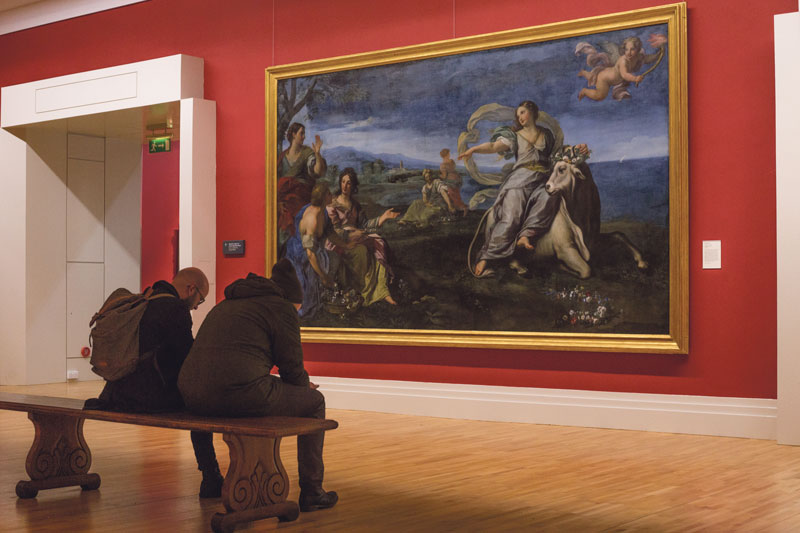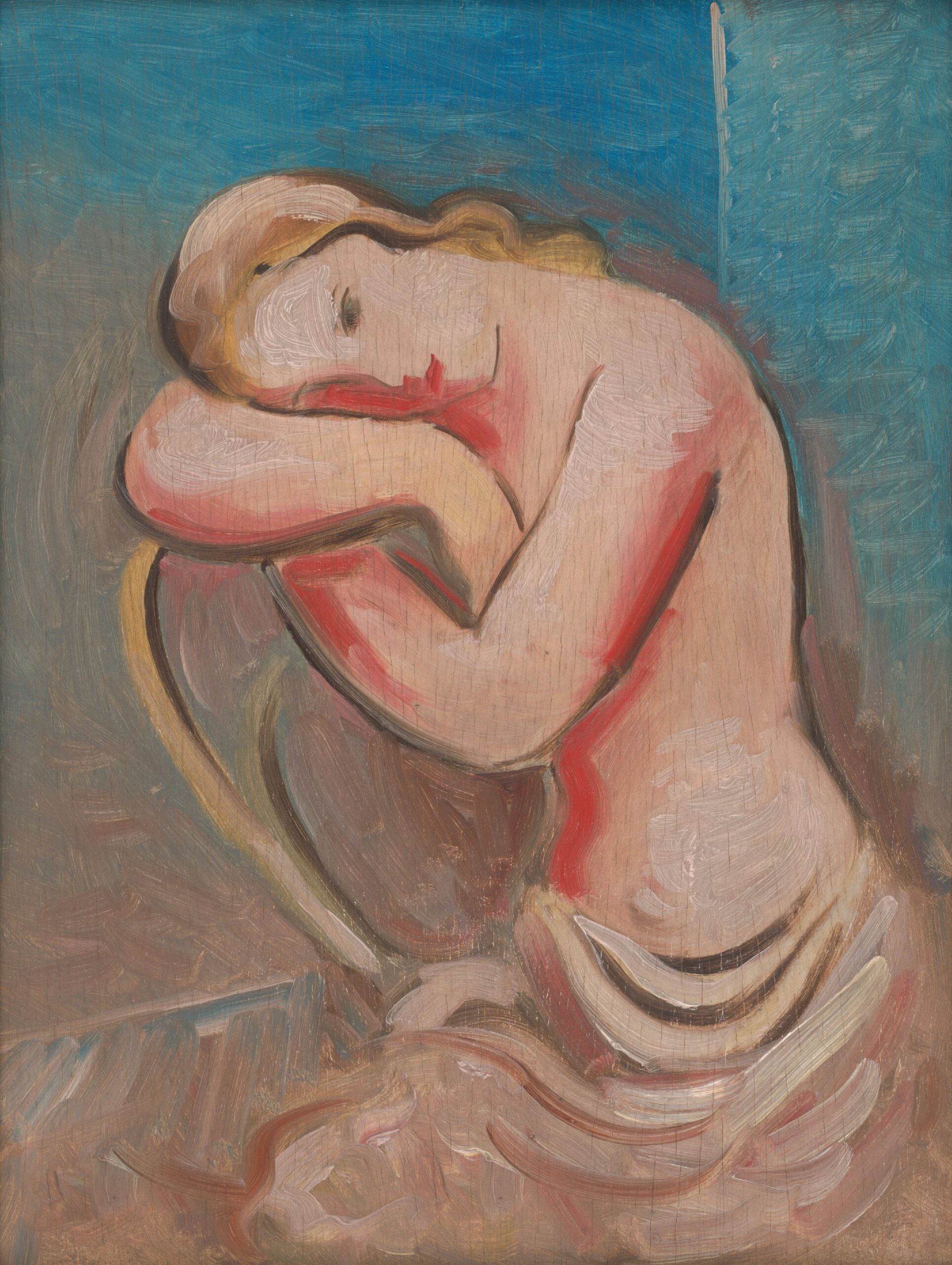
In Dublin, “inspired” artists are few and far between, and many of them are forced to leave the capital in search of greener pastures. “Inspiration for the Nation” is the new slogan of the National Gallery of Ireland since the reopening of its Milltown and Dargan wings last June. And although the gallery is a beautiful representation of what the art scene in Dublin could be, the fact of the matter remains – it is extremely difficult to make it as an aspiring artist in Dublin.
Artist Eimear Walshe has fled Dublin for Eindhoven on their second research residency. There, in the Netherlands, they have opened a “Department of Sexual Revolutions” aimed at progressive conceptual studies – while at home in Dublin the most progressive movement is doubtlessly that of the women still fighting to repeal the eighth amendment. Walshe, like many, is deeply disheartened by attitudes towards art in Dublin, especially coming from the state.
“The scarcity of funding creates an environment in the Irish community where peers are turned against one another, mostly implicitly. It sets up a dynamic of competitors, rather than collaborators or colleagues, which is such a huge shame. It also has the effect of reinforcing tiered hierarchies, because fewer people are making their living entirely from art. And of course, it excludes people who cannot take on the cost of extensive unpaid labour over many years, which seems a prerequisite for having a career in art.” Walshe highlights the main reason why Dublin is experiencing an artistic talent drain, with too little support from both the government and the artistic community itself – the odds are stacked against young artists who are looking to make a name for themselves.
The scarcity of funding creates an environment in the Irish community where peers are turned against one another
Our National College of Art and Design (NCAD) seems increasingly lacklustre following the cuts to its funding during the recession. It is now a place to get a degree rather than a quality education, with many artists not practicing off-campus. This has resulted in NCAD also cutting out its foundation year programme, meaning that students now miss out on essential core training. David Crowley is the new head of Visual Media in NCAD. He arrived from the famous Goldsmiths, University of London, last September. Speaking with The University Times, Crowley made the point that considering its size, Dublin, in fact, is host to many active artistic and cultural events each week. He highlighted how cities of this size and bigger in England are much further behind. Looking around, it seems like the most engaged people with the art scene in Dublin are tourists. Is our public, and are our artists? Many seem to think not, and that art here doesn’t get the respect and support that it has in other parts of Europe.
When talking about the state’s attitude towards art, Lee Hamil, an artist studying in NCAD, said: “I think it exists from the foundation of the [independent Irish] state.” Hamil’s work is mainly drawn from the personal and political life of Charles Haughey and his Shakespearean rise and fall. He uses this to explore the theatre of politics, as well as the legacy of art and culture in Ireland. Instead of a support of the fine arts, as was encouraged across Europe, in the newly independent Ireland only traditional dance, folklore and the Irish language were considered acceptable art forms. And although the government at the time would have had meagre means in terms of funding, their support was dedicated to these practices. During this time, there was no department for the arts in the government.
While we look at examples such as De Valera’s proclamation of W B Yeats as Ireland’s national poet, throughout his life Yeats gained little respect from the public as he was seen as too progressive and often criticised. Considering the struggles of the Abbey Theatre, the Hugh Lane Gallery and even figures like James Joyce and Sean O’Casey, there is no denying that life as an artist, even as an exceptionally talented one, often received little to no support within Dublin and even greater Ireland. The art scene in Dublin was thought of by some as very stagnant.
There were grand gestures made such as the renovations of the Abbey Theatre and the National Gallery of Ireland in the 1960s, but much of the support for individual Irish artists was overlooked. It wasn’t until Charles Haughey became the Minister for Finance in 1966 that clear improvements were made. Haughey started to make real progress in the 1980s with the development of the staple cultural institutions of Ireland. The Department for Art, Culture and Heritage was established and the Arts Council budget was raised up to €4 million. On top of this, it was given €8 million of the National Lotteries income.
Hamil remains convinced that since then, the government’s support and engagement with artists and Irish culture has only declined: “There is only an interest in something that will contribute heavily to the market, as opposed to something that will be beneficial on a more social level and it’s depressing, for the artists it is something that is depressing.” Today in Ireland, only 0.2 per cent of the annual budget is set aside for our arts and culture – definition that is stretched to cover a wide range of creative facilities, not just art. The government has recently ruled to appeal a High Court decision so as to be allowed to demolish Moore St, a historic national monument, and build yet another shopping centre. Over the last few months, the RTÉ Symphony Orchestra and Concert Orchestra have been called into review, as their funding came under massive pressure to be reduced. All the while, the uninspiring Spire, Dublin’s signature landmark, is costing more to maintain than its original erection.
Another practicing artist David Monaghan elaborates on the role that smaller galleries play within Dublin’s artistic community. Monaghan thinks that the small galleries are precisely what give life to Dublin: “Because of their size and people, they serve multiple different functions.” This is something to be celebrated. These local galleries support community-based art and avoid large-scale government-run institutions. The smaller artist-run galleries are crucial in developing a vibrant art scene. As Monaghan points out, “smaller institutions allow for that diversity and that conversation”. But he is also unsure as to how to promote them and support more of an interaction with the general public, and the worry of an apathetic government is again prominent. “I think the council and the government are trying to keep up standards, to keep up a view to foreign players that Ireland is not a luddite…”, Monaghan says. “I think generally the government’s view on public art, and maybe this is me being pessimistic, is to use it as a way to improve districts in Dublin that are socially and economically deprived areas. I think the government is kinda narrow in that respect.”
All the while, more and more artists have needed to leave Dublin, either in search of affordable housing or to find sufficient facilities to work and study in. Sometimes they simply find the struggle too much, and give up their practice, taking with them that special sense of Irish culture and leaving us with an art scene that is in danger of remaining, frankly, uninspired.






